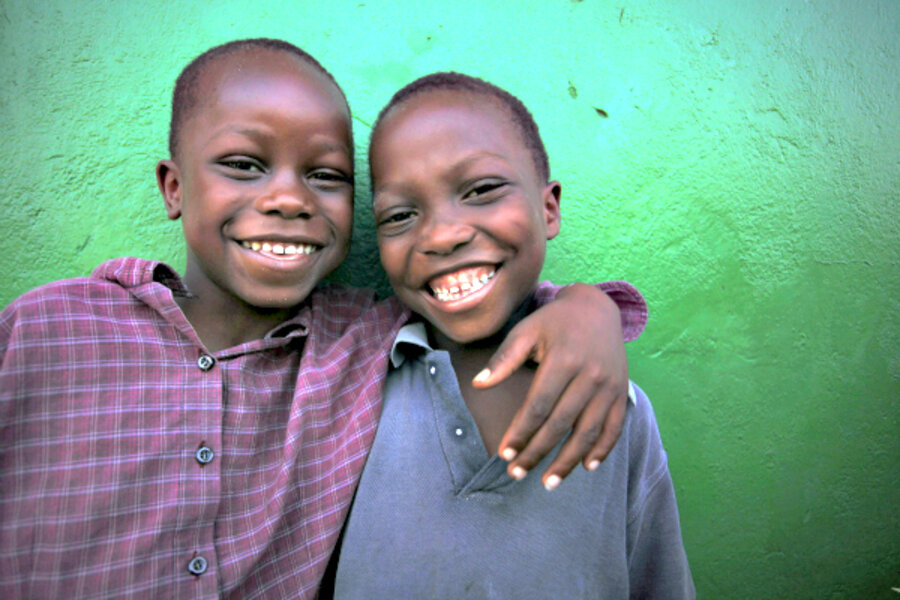Changing the face of aid, literally
Loading...
In TV commercials 25 years ago, Sally Struthers held starving orphans and begged American viewers to help them. A new campaign by Oxfam America portrays aid recipients in a different light – as entrepreneurs who are helping themselves.
Oxfam’s campaign hit Washington D.C. this month, appearing in airports, on billboards, and in various publications. It depicts local leaders and entrepreneurs in developing countries, their photos superimposed with titles like “job creator” and “beltway outsider,” descriptors pulled from the Hill’s vernacular.
Greg Adams, Oxfam’s director of aid effectiveness, said the ads are aimed at raising awareness among the Washington establishment amid debates about the budget and fiscal austerity.
“[The campaign] is motivated by a theory of change that Congress will be much more willing to invest when they see aid is going to trustworthy partners,” he said. “We thought, let’s put the end users of aid in a situation where they can assert what they are doing and tell their own story. The goal is to make people protagonists rather than just aid recipients.”
Although this strategy seems to be a rational approach, some evidence suggests that donors are less likely to give to organizations that take a positive tone in their advertising.
Deborah Small, associate professor of marketing and psychology at the University of Pennsylvania, has studied how the images of victims influence sympathy and giving. Her research indicated that donors are more likely to spend on causes that portray a single individual expressing sadness than a group appearing happy. Sad depictions caused respondents to feel the victim’s pain, producing empathy, and, ultimately, more donations.
“We coded a bunch of [nonprofit] websites and found that there was a mix of expressions; the most common was a smile," she says. "When we talked to charities, they wanted to maintain an upbeat message, but to us, this was the wrong intuition of what works.”
Small believed the strength of the Oxfam campaign was its portrayal of a single individual. She calls this the “identifiable victim effect,” in which one person is used as a “poster child” to represent a cause. “Focusing on a particular individual is more compelling to the viewer,” she said. “It’s telling an individual story and personalizing it. Storytelling is critical and works really well.”
Dan Portnoy, author of “The Nonprofit Narrative: How Stories Can Save the World,” concurred that storytelling is a powerful way to raise awareness. However, he believed Oxfam fell short in delivering its message.
“I don’t know that this is making people ask questions," he said. "They’re telling me a fact, they’re not telling me part of a fact that makes me want to know more. I want to give you enough information that you’re asking questions, that you’re going to get a lean in.”
But Adams and Portnoy agree that one of the biggest challenges in garnering support for development initiatives is reversing the ways that people in the United States have traditionally viewed aid projects.
“There was the white-guilt thing, which was usually very negative and had the implication that we will solve all the world’s problems.” Portnoy said. “Twenty-five to 30 years later, that’s not really working.”
Adams believes that donors feel “aid fatigue” when poverty, hunger, and disease persist despite decades of their charitable giving.
“The problem with the way Americans look at aid is that they see it as a transfer of stuff," he said. "There’s a belief that if we give enough stuff, people won’t be poor anymore.”
Donors too sense that the old ways aren’t effective. Adams said that the concept behind the campaign grew out of a series of focus groups in which several participants stressed the need for “teaching a man how to fish” rather than just giving charity to the needy.
In response, Oxfam hopes to depict the “fishermen” of the developing world, who are looking for investment, not a handout.
“Humans have been fishing for 400,000 years,” Adams said. “No one needs to teach them how to fish.”







